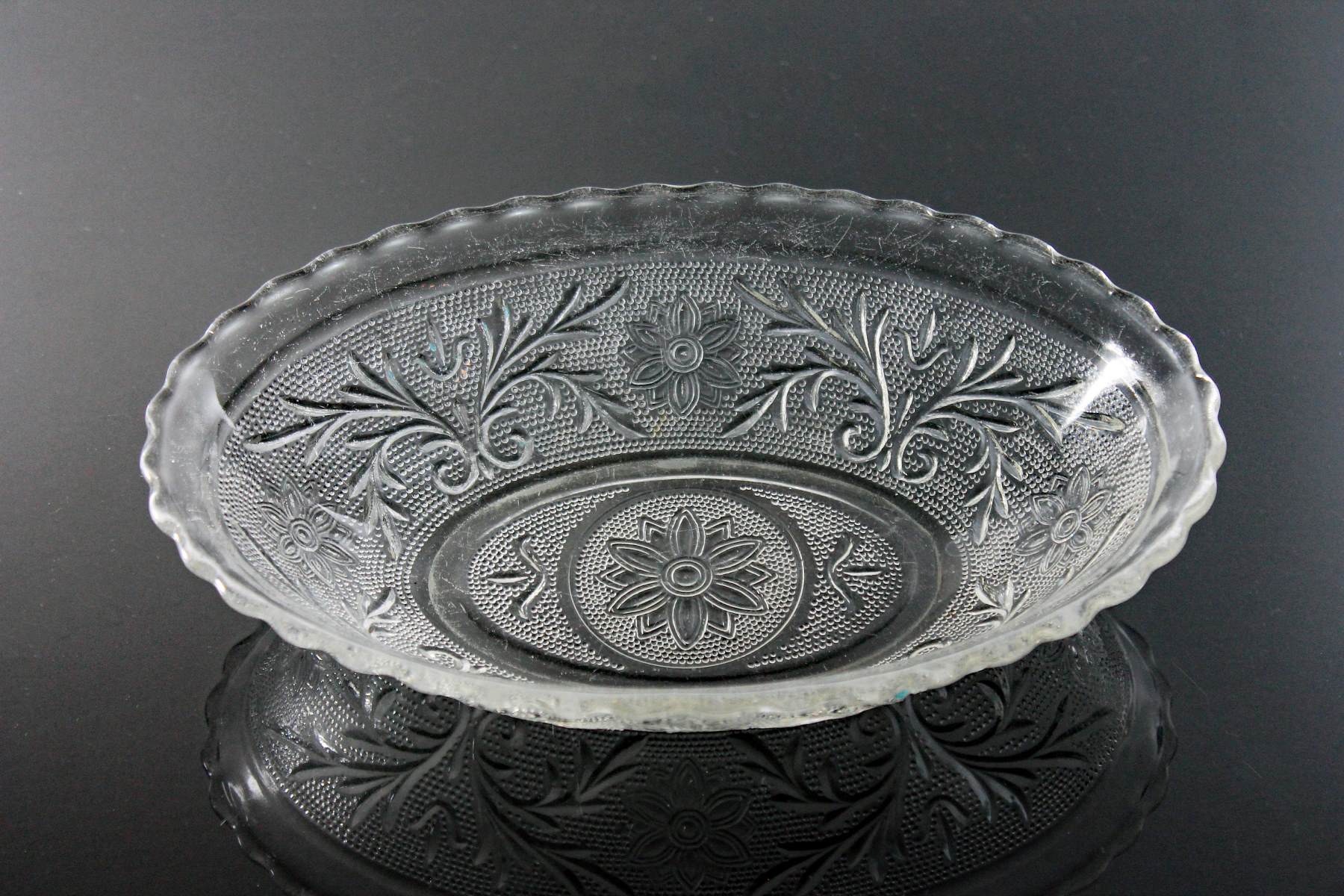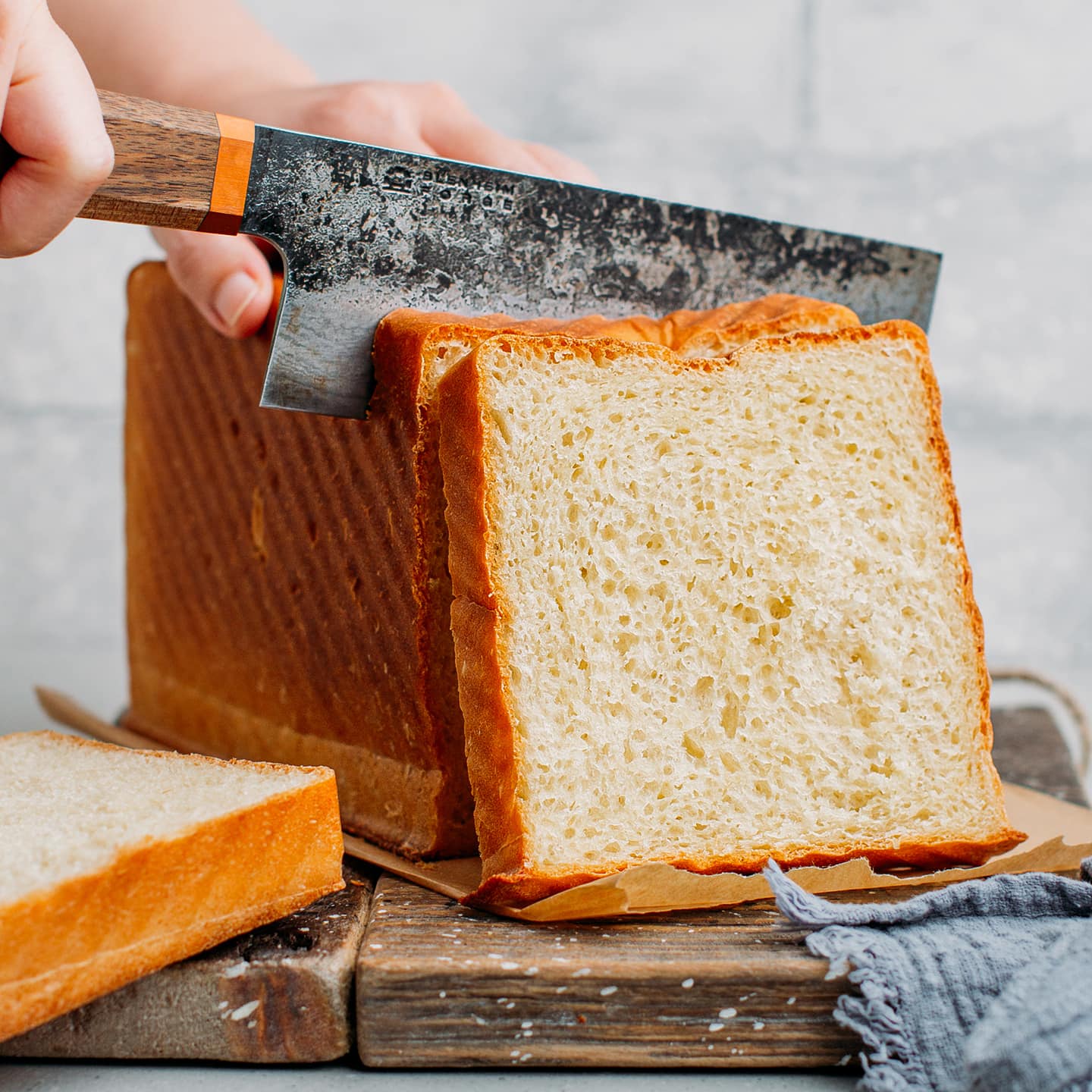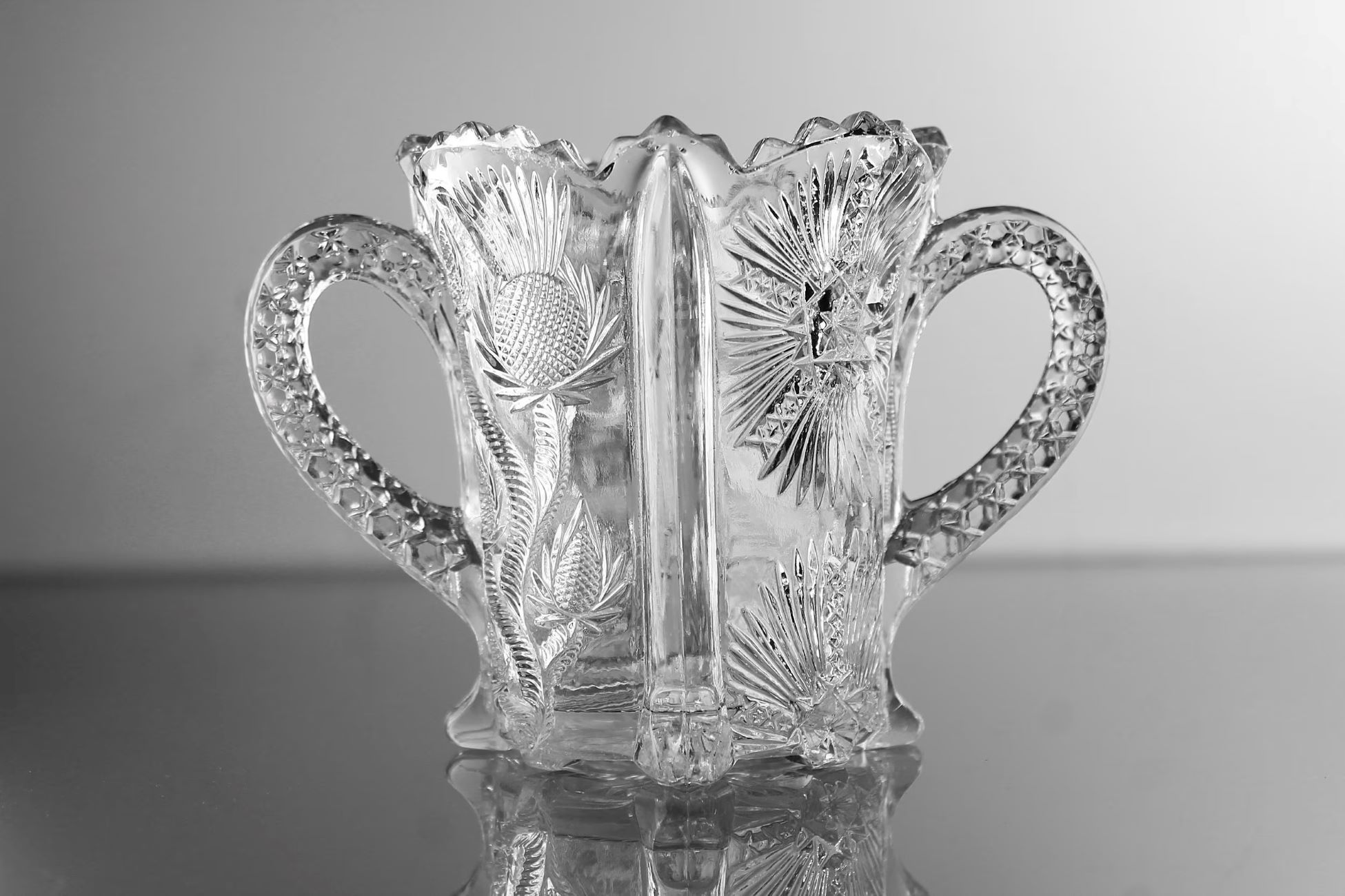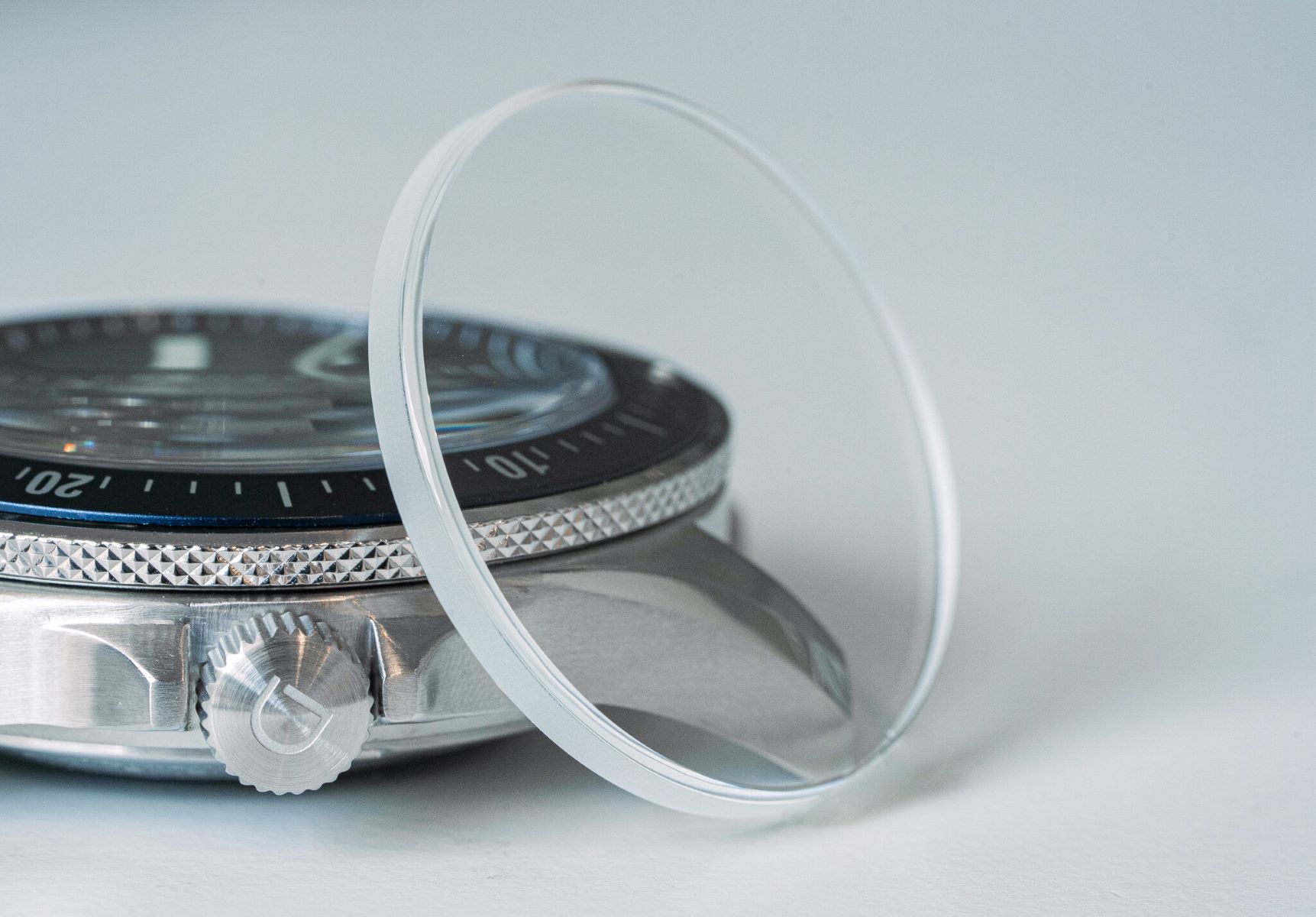Home>Furniture & Design>Interior Design Trends>What Is Sandwich Glass


Interior Design Trends
What Is Sandwich Glass
Modified: October 18, 2024
Discover the timeless elegance of Sandwich Glass and its influence on interior design trends. Explore the history and beauty of this classic glassware.
(Many of the links in this article redirect to a specific reviewed product. Your purchase of these products through affiliate links helps to generate commission for Storables.com, at no extra cost. Learn more)
Introduction
Sandwich glass, a timeless and exquisite form of glassware, has captivated enthusiasts and collectors for generations. Its allure lies in the delicate craftsmanship, vibrant hues, and rich history that have made it a cherished part of interior design and decorative arts. From its origins in the 19th century to its enduring appeal in contemporary settings, sandwich glass continues to evoke a sense of elegance and sophistication.
The artistry and craftsmanship of sandwich glass have stood the test of time, making it a beloved choice for both practical use and ornamental display. As we delve into the history, characteristics, production process, and uses of sandwich glass, we will uncover the enduring charm and significance of this remarkable glassware.
Key Takeaways:
- Sandwich glass, with its vibrant colors and intricate patterns, has a rich history dating back to the 19th century. Its timeless elegance makes it a cherished and sought-after form of glassware in interior design and decorative arts.
- The production process of sandwich glass involves meticulous craftsmanship, from glass preparation to decorative treatments. Its enduring beauty and versatility make it a coveted choice for decorative accents, tableware, lighting fixtures, collectible art, architectural elements, and giftware.
Read more: How To Store Sandwich Bread
History of Sandwich Glass
The history of sandwich glass dates back to the early 19th century, with its roots firmly planted in the town of Sandwich, Massachusetts. It was during this time that the Boston and Sandwich Glass Company, founded in 1825, became a prominent force in the production of pressed glassware. The company's innovative techniques and skilled artisans played a pivotal role in shaping the evolution of sandwich glass.
The Boston and Sandwich Glass Company was renowned for its pioneering use of pressed glass, a method that involved pressing molten glass into intricately designed molds. This technique allowed for the creation of elaborate patterns and designs, setting sandwich glass apart from other forms of glassware of that era. The company's commitment to quality and innovation propelled sandwich glass into the spotlight, garnering widespread acclaim and recognition.
The 19th century marked a period of remarkable growth and prosperity for sandwich glass, as it gained popularity not only in the United States but also internationally. The exquisite beauty and craftsmanship of sandwich glass captivated the hearts of collectors and enthusiasts, solidifying its status as a coveted and cherished art form.
As the 19th century progressed, sandwich glass continued to flourish, with the Boston and Sandwich Glass Company at the forefront of its production. The company's dedication to excellence and its ability to adapt to changing tastes and trends ensured that sandwich glass remained a symbol of elegance and refinement.
The legacy of sandwich glass endured well into the 20th century, leaving an indelible mark on the world of decorative arts and interior design. While the Boston and Sandwich Glass Company eventually ceased operations in the late 1800s, the impact of its contributions to the art of glassmaking continues to be felt to this day.
The rich history of sandwich glass serves as a testament to the enduring appeal and timeless beauty of this exceptional form of glassware. Its journey from a small town in Massachusetts to international acclaim is a testament to the artistry and craftsmanship that have made sandwich glass a cherished and revered part of decorative arts and interior design.
Characteristics of Sandwich Glass
Sandwich glass is renowned for its distinctive characteristics, each contributing to its timeless allure and enduring popularity. From its exquisite colors to its intricate patterns, the defining features of sandwich glass set it apart as a cherished and sought-after form of glassware.
1. Vibrant Colors
One of the most striking characteristics of sandwich glass is its vibrant and lustrous colors. From rich cobalt blues to delicate shades of pink and green, sandwich glass exhibits a wide spectrum of hues that add a touch of elegance to any setting. The use of colored glass in sandwich glassware allows for the creation of captivating and visually stunning pieces that have become synonymous with sophistication and refinement.
2. Intricate Patterns
The intricate patterns found in sandwich glass are a testament to the artistry and skill of its creators. From elaborate pressed designs to delicate etchings, the patterns adorning sandwich glassware are a testament to the meticulous craftsmanship that goes into each piece. These patterns not only enhance the visual appeal of sandwich glass but also showcase the precision and attention to detail that define this exceptional form of glassware.
Read more: How To Make A Quilt Sandwich
3. Transparency and Clarity
Despite its vibrant colors and intricate patterns, sandwich glass maintains a remarkable level of transparency and clarity. This characteristic allows light to pass through the glass, creating a mesmerizing play of colors and reflections. The transparency of sandwich glass adds depth and dimension to its appearance, making it a captivating addition to any interior space.
4. Timeless Elegance
Above all, the enduring characteristic of sandwich glass is its timeless elegance. Whether displayed as decorative pieces or used for practical purposes, sandwich glass exudes an air of sophistication and refinement that transcends trends and fads. Its classic appeal makes it a versatile choice for both traditional and contemporary interior design, adding a touch of timeless beauty to any setting.
The characteristics of sandwich glass, from its vibrant colors and intricate patterns to its transparency and timeless elegance, contribute to its status as a beloved and cherished form of glassware. These defining features have solidified sandwich glass as a symbol of artistry, craftsmanship, and enduring beauty, ensuring its place as a timeless treasure in the world of interior design and decorative arts.
Production Process of Sandwich Glass
The production process of sandwich glass is a testament to the artistry and skill involved in creating these exquisite pieces of glassware. From the initial stages of glass preparation to the intricate molding and finishing techniques, each step in the production process contributes to the timeless beauty and allure of sandwich glass.
-
Glass Preparation: The production process begins with the careful selection and preparation of raw materials, including silica sand, soda ash, and limestone. These ingredients are meticulously measured and mixed to create a homogeneous batch of glass. The batch is then heated in a furnace to high temperatures, melting it into a molten state ready for shaping.
-
Molding and Pressing: Once the molten glass reaches the desired temperature and consistency, skilled artisans use molds and presses to shape the glass into intricate designs. This process, known as pressing, allows for the creation of elaborate patterns and textures that are characteristic of sandwich glass. The molds are carefully crafted to impart specific details and designs onto the glass, showcasing the precision and artistry of the glassmakers.
-
Annealing: After the glass is molded and pressed, it undergoes a crucial step known as annealing. This process involves carefully cooling the glass at a controlled rate to relieve internal stresses and strengthen the finished pieces. Annealing is essential for ensuring the durability and longevity of sandwich glass, as it helps prevent cracking or shattering due to thermal stress.
-
Cutting and Polishing: Once the glass has been annealed, skilled artisans may further enhance its beauty through cutting and polishing techniques. These processes involve the careful shaping and smoothing of the glass edges to achieve a refined and elegant finish. Cutting and polishing add a touch of sophistication to sandwich glass, elevating its visual appeal and creating a captivating play of light and reflection.
-
Decorative Treatments: In some instances, sandwich glass may undergo additional decorative treatments, such as etching or painting, to embellish its surface with intricate designs or embellishments. These decorative techniques add an extra layer of artistry and individuality to each piece of sandwich glass, further enhancing its aesthetic appeal.
The production process of sandwich glass is a labor-intensive and meticulous craft that requires a harmonious blend of tradition, innovation, and expertise. Each stage in the process, from glass preparation to decorative treatments, reflects the dedication and artistry of the glassmakers, resulting in the timeless beauty and enduring allure of sandwich glass.
Uses of Sandwich Glass
Sandwich glass, with its timeless elegance and exquisite craftsmanship, serves a myriad of purposes in both practical and decorative contexts. Its versatility and enduring beauty make it a coveted choice for enhancing interior spaces and adding a touch of sophistication to various settings.
Read more: How To Store Sandwiches In The Fridge
1. Decorative Accents
Sandwich glass pieces, such as vases, bowls, and figurines, are often used as decorative accents in homes and commercial spaces. The vibrant colors and intricate patterns of sandwich glass make it an ideal choice for adding visual interest and elegance to interior decor. Whether displayed on shelves, mantels, or tabletops, sandwich glass pieces serve as captivating focal points that elevate the aesthetic appeal of any room.
2. Tableware and Serveware
The timeless charm of sandwich glass extends to its use as tableware and serveware. From delicate glass plates and bowls to intricately designed pitchers and tumblers, sandwich glass adds a touch of refinement to dining experiences. Its transparency and lustrous colors create a stunning backdrop for culinary presentations, making it a popular choice for special occasions and formal gatherings.
3. Lighting Fixtures
Sandwich glass is often utilized in the creation of exquisite lighting fixtures, including chandeliers, sconces, and pendant lights. The transparency and clarity of sandwich glass allow light to interact with its vibrant hues, casting a warm and inviting glow in any space. The intricate patterns and textures of sandwich glass further enhance the visual allure of lighting fixtures, creating a captivating interplay of light and color.
4. Collectible Art
For enthusiasts and collectors, sandwich glass holds a special place as a collectible art form. The historical significance and enduring beauty of sandwich glass pieces make them highly sought after by collectors worldwide. Whether as standalone pieces or part of a comprehensive collection, sandwich glass serves as a tangible link to the rich heritage of glassmaking and decorative arts.
Read also: 11 Amazing Sandwich Grill for 2025
5. Architectural Elements
In architectural and interior design, sandwich glass is often incorporated into windows, doors, and decorative panels. Its vibrant colors and intricate designs add a touch of elegance and character to architectural elements, infusing spaces with a sense of timeless beauty and sophistication.
6. Giftware
Due to its exquisite craftsmanship and enduring appeal, sandwich glass makes for exceptional gifts for special occasions. Whether as wedding presents, anniversary gifts, or tokens of appreciation, sandwich glass pieces convey a sense of artistry and thoughtfulness, making them cherished mementos for recipients.
In essence, the uses of sandwich glass are as diverse as its timeless beauty and craftsmanship. From decorative accents to functional pieces, sandwich glass continues to enrich interior spaces and evoke a sense of elegance and refinement that transcends time and trends.
Collecting Sandwich Glass
Collecting sandwich glass is a passion that resonates with enthusiasts and connoisseurs of decorative arts. The allure of sandwich glass lies in its rich history, timeless elegance, and exceptional craftsmanship, making it a coveted addition to any collection. For those captivated by the beauty and artistry of sandwich glass, the pursuit of acquiring and preserving these exquisite pieces becomes a deeply rewarding endeavor.
The appeal of collecting sandwich glass extends beyond the intrinsic beauty of the glassware; it serves as a tangible link to the rich heritage of glassmaking and the decorative arts. Each piece of sandwich glass carries with it a story of innovation, artistry, and the enduring legacy of the Boston and Sandwich Glass Company. As collectors seek out rare and exceptional examples of sandwich glass, they become custodians of history, preserving the legacy of this remarkable art form for future generations to appreciate and admire.
The process of collecting sandwich glass often involves a journey of discovery and appreciation for the diverse range of styles, patterns, and colors that characterize this exceptional glassware. From delicate pressed glass vases to intricately patterned tableware, each piece offers collectors a glimpse into the artistry and craftsmanship that define sandwich glass. The pursuit of acquiring unique and rare examples of sandwich glass becomes a quest for uncovering hidden treasures and celebrating the diversity of this timeless art form.
Collectors of sandwich glass often immerse themselves in the study of historical catalogs, manufacturer's marks, and identifying characteristics that distinguish genuine pieces from reproductions. This dedication to research and knowledge enhances the collecting experience, allowing enthusiasts to make informed decisions and discern the authenticity and provenance of each acquisition. The process of learning about the nuances of sandwich glass adds depth and meaning to the act of collecting, fostering a deeper connection to the art form and its historical significance.
Furthermore, the community of sandwich glass collectors provides a vibrant and supportive network for enthusiasts to share their passion, knowledge, and discoveries. Whether through specialized collector's clubs, exhibitions, or online forums, collectors have the opportunity to connect with like-minded individuals, exchange insights, and expand their understanding of sandwich glass. This sense of community fosters a shared appreciation for the artistry and beauty of sandwich glass, enriching the collecting experience and creating lasting connections among enthusiasts.
In essence, collecting sandwich glass transcends mere acquisition; it becomes a journey of exploration, appreciation, and preservation of a cherished art form. The act of collecting sandwich glass is a testament to the enduring allure and significance of this exceptional glassware, ensuring that its legacy continues to shine brightly in the world of decorative arts and interior design.
Conclusion
In conclusion, sandwich glass stands as a timeless testament to the artistry, innovation, and enduring beauty of glassware. From its humble origins in the town of Sandwich, Massachusetts, to its widespread acclaim and international recognition, sandwich glass has left an indelible mark on the world of decorative arts and interior design. The rich history of the Boston and Sandwich Glass Company, with its pioneering techniques and commitment to excellence, has shaped the evolution of sandwich glass, elevating it to a revered status as a cherished art form.
The characteristics of sandwich glass, including its vibrant colors, intricate patterns, transparency, and timeless elegance, have solidified its place as a beloved and sought-after form of glassware. The production process of sandwich glass, marked by meticulous craftsmanship and attention to detail, reflects the dedication and artistry of its creators. Each piece of sandwich glass serves as a testament to the enduring legacy of the Boston and Sandwich Glass Company and the rich heritage of glassmaking.
The uses of sandwich glass, spanning from decorative accents and tableware to lighting fixtures and collectible art, showcase its versatility and enduring appeal. Whether displayed in homes, commercial spaces, or cherished as collectible treasures, sandwich glass continues to enrich interior settings and evoke a sense of sophistication and refinement.
For collectors and enthusiasts, the pursuit of acquiring and preserving sandwich glass becomes a deeply rewarding endeavor, steeped in a passion for the art form and a commitment to honoring its historical significance. The act of collecting sandwich glass transcends mere acquisition, becoming a journey of exploration, appreciation, and preservation of a cherished art form.
In essence, sandwich glass remains a timeless treasure, weaving together history, artistry, and enduring beauty. Its legacy continues to shine brightly, captivating the hearts of collectors, enthusiasts, and admirers, ensuring that the art of sandwich glass remains a cherished and revered part of decorative arts and interior design for generations to come.
Frequently Asked Questions about What Is Sandwich Glass
Was this page helpful?
At Storables.com, we guarantee accurate and reliable information. Our content, validated by Expert Board Contributors, is crafted following stringent Editorial Policies. We're committed to providing you with well-researched, expert-backed insights for all your informational needs.













0 thoughts on “What Is Sandwich Glass”